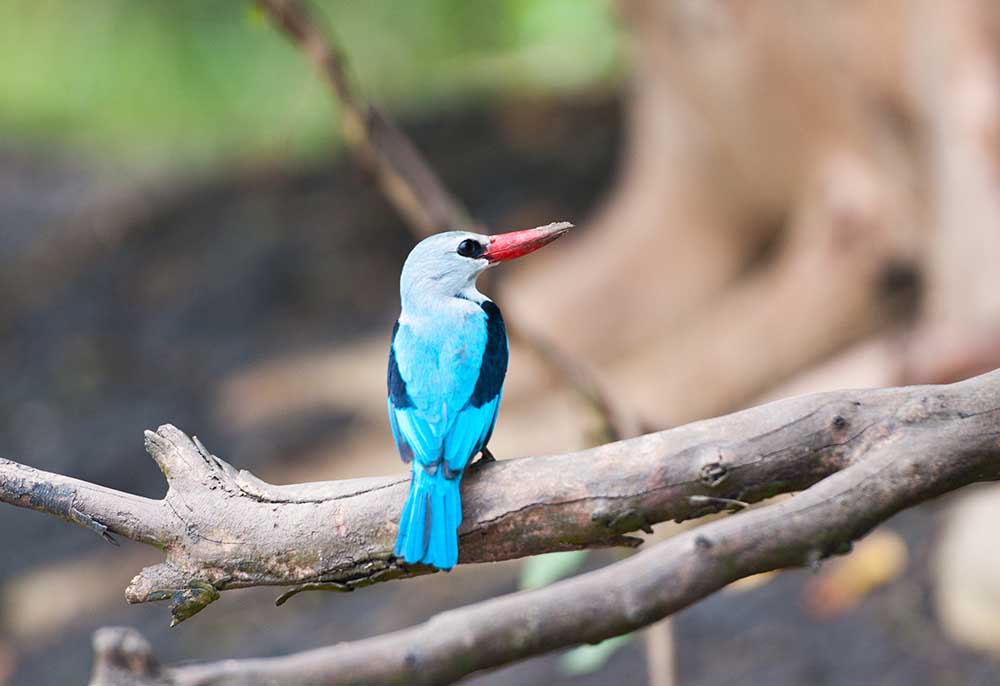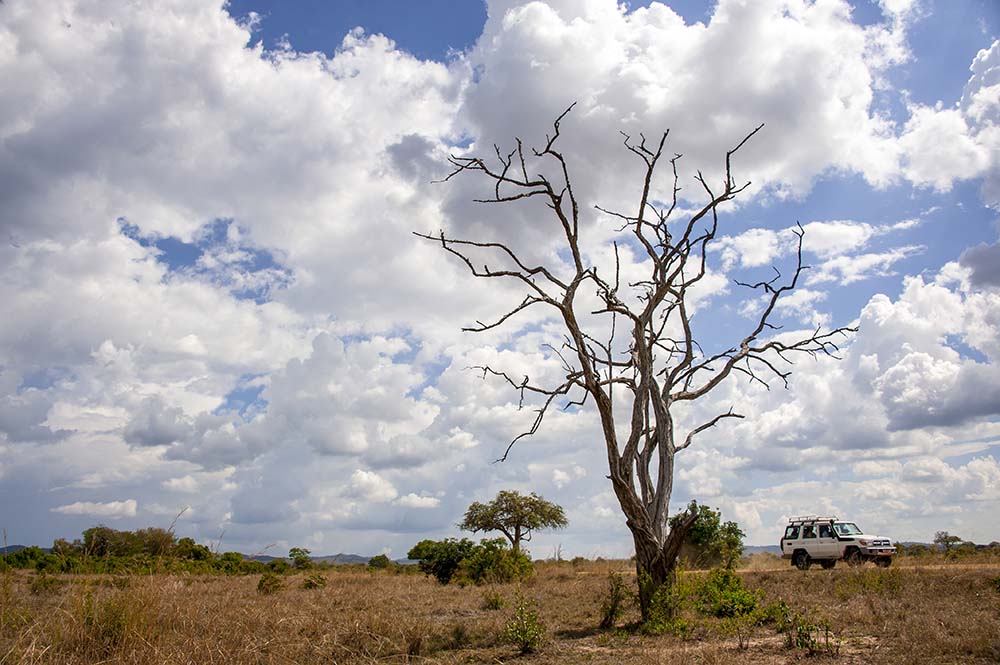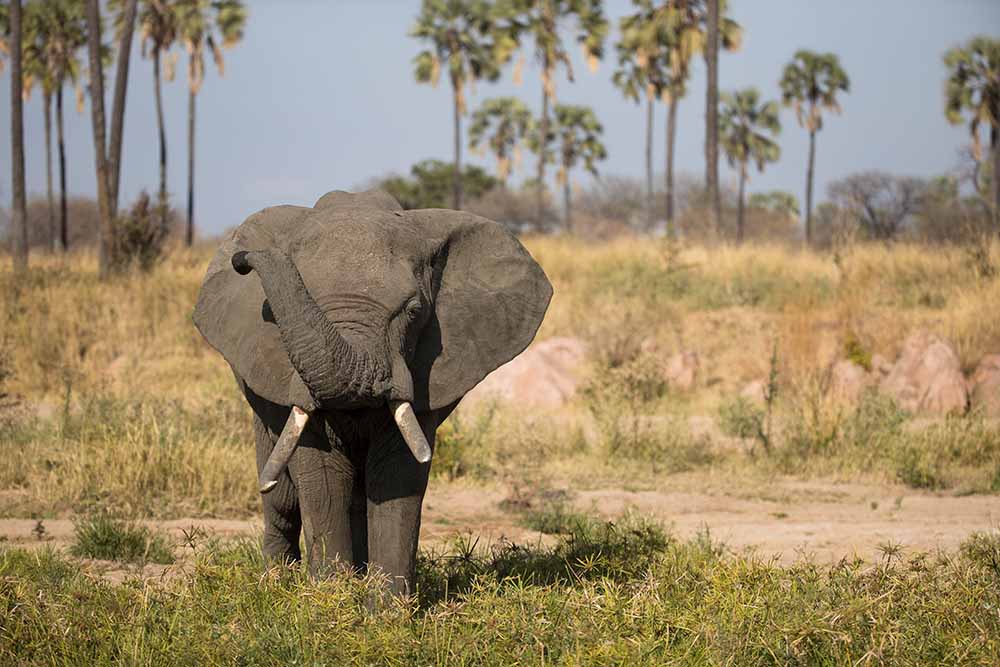Nyerere National Park
Are you thinking to go on safari in Nyerere?
Talk to our experts about the perfect planning for your holiday.
Now the Largest National Park in Africa, Nyerere National Park is a newly established Park which is part of what is known as Selous Game Reserve.
About Nyerere National Park
The name of the Park is given in honor of the founder of the Nation, the Late Mwalimu Julius Kambarage Nyerere.
The Park has been established in the year 2019 and covers an area of over 30,000 square kilometers.
With its largest wilderness area in Africa, Nyerere National park has relatively undisturbed ecological and biological processes, including a diverse range of wildlife with significant predator and prey relationship.
The might Rufiji with its renown population of hippo and Rhino flows to the Indian ocean. The river has been designated as a photographic zone and is a popular tourist destination.
The sheer volume of games in the Nyerere is just outstanding !
Elephant, buffalo and lion are found in greater numbers and the park, together with the remaining part of Selous has the last true stronghold for African wild dog
Visitors to this vast park will be able to enjoy the widest diversity of safari activities in the country, like boating safaris as well as standard game drives, walking safaris and legendary fly camping trips.
Famous for:
Wildlife: lions, wildebeests, giraffes, zebras, hippopotamuses, rhinos, antelopes, hyenas, African wolves, and a large number of crocodiles in the Rufiji River. Most notably the park is also known for its prolific population of African Wild Dogs.
- Nyerere National Park is spread over 30,893 square kilometers of land area, making it the largest National Park in Africa.
- The Park is located in south eastern Tanzania, and was carved out of the Selous Game Reserve. Prior to creating of the Nyerere N.P, Selous Game Reserve measured approximately 54,600 square kilometers, which at the time made it the 11th largest National Park in the world.
- The nearest large city to Nyerere National Park is Dar es Salaam, the capital city of Tanzania. Dar es Salaam is about 230 kilometers from the main access gate to Nyerere N.P.
Best Time: June to October
High Season: June to October (The tourist area around the Rufiji River gets crowded)
Low Season: March, April and May (Many lodges are closed)
Getting to National Park
Most safaris to Nyerere National Park (formerly Selous GR) are fly-in packages from Dar es Salaam.
By plane
Julius Nyerere International Airport (DAR) just outside Dar es Salaam is the main international airport and entry to the country. In most cases, your tour operator will pick you up and handle all further arrangements.
Nyerere NP is often visited as a safari extension to a beach holiday on Zanzibar Island, or one of the beaches around Dar es Salaam. To accommodate this, there are daily scheduled flights from either departure point to both Nyerere and Ruaha. Flights from Arusha town, the base for the northern safari circuit, are also available.
As a Road Safari
Another option is to drive to Nyerere NP from Dar es Salaam on a road safari, but the trip is bumpy and uncomfortable and will take a full day. Time permitting, there is the option of a stopover at Mikumi National Park to break up the trip.
- The Rufiji River, Myriad oxbows, delta and Lakes
- Large population of african wild dogs
- Highest concentration of hippos and crocodiles.
- Continent largest population of elephants
- Rare species of antelopes
- Diverse birdlife
- Game drive
- Boating
- Walking safari and fly camping,
- Village visit
- Mid range accommodation: Sable mountain lodge, Beho Beho camp, Rufiji River Camp
- Luxury hotels: Luxurious Selous Serena camp, Selous river camp
- Best Weather: June to October (Little to no rainfall)
- Worst Weather: March and April (Peak of Wet season)
If you liked Nyerere National Park, you might also like Mahale Mountains National Park.
If you liked Nyerere National Park, please follow us on Instagram for more content like this.
Do you need expert tips on planning for your next safari in Africa?
Share your email here
[mc4wp_form id=”29279″]





